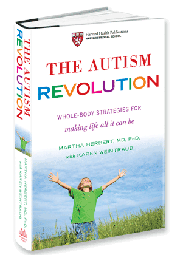Some people argue that autism involves physiological changes that are associated with environmental exposures. This point of view sees autism as a particularly challenging version of chronic complex health problems affecting many people. Such problems include obesity, diabetes, chronic fatiguing illnesses, chemical sensitivities, metabolic syndrome and more. Many of these conditions have been linked to environmental exposures.
Autism can involve a particularly severe and vexing disruption of function very early in life. From this point of view autism is like the “canary in the coal mine.” This expression refers to the practice of miners of taking canaries into the mines as living air quality indicators – if the canary keeled over they knew to get out of there because the air quality was deteriorating, and the bird was affected before everyone else.
Thus to say that people with autism are “canaries in the coal mine” is to say that the problems faced by people with autism are part of a class of problems that will affect more and more people if present trends of pollution and chronic disease continue. Autism thus becomes a wake-up call.
This point of view is based on the belief that at least a substantial proportion of the increase in reported cases of autism represents a true increase, and on the belief that environmental factors are contributing to this increase.
It also often involves a dissatisfaction with medical practices that treat symptoms without addressing underlying contributions of toxicity to disrupting physiology so it displays these symptoms.
The use of the “canary in the coal mine” metaphor can reflect a dissatisfaction with conflict of interest and corruption in the medical industry that is seen as compromising healthcare.
DEBATE
Criticisms of this point of view often include the following points
- That there is no really solid evidence that environmental exposures cause autism.
- It is true that many studies present weak or negative evidence, and that it might take years to conduct the kinds of larger studies that could (but might not) establish stronger evidence.
- One response to this is that research funders have only recently begun to support this kind of work
- Another response is that it is not optimal to study environmental factors one at a time because they converge on the system through common physiological pathways, so that negative studies of individual substances may not prove much if the impact is through accumulation of many exposures.
- Combinations of exposures may create impacts by interacting with each other that might not be predicted from the impacts of any one exposure alone.
- That the increases in reported cases do not represent true increases in the incidence or prevalence of autism.
- At least some though perhaps not all of the increases in ASD can be explained by altered diagnostic criteria, increased awareness, and “diagnostic substitution” (diagnosing people as autistic who in the past would have been put in another diagnostic category).
- It is not an “either-or” — that is, we don’t have to choose between all of the increases being real and none of them being real. The numbers presently reflect contributions that do not represent true increases and contributions that cannot be explained, some of which may (or may not) be ascertained in the future as attributable to the environment.


